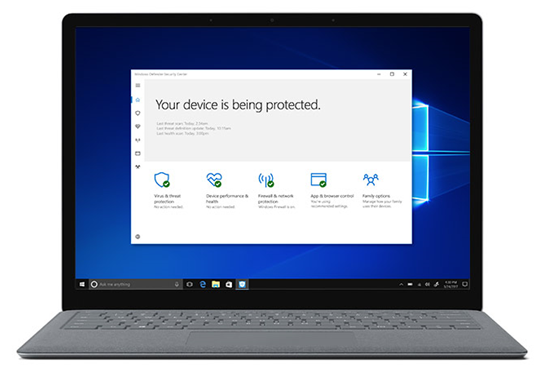With regular security updates together with enhancements, Microsoft has been extremely proactive trying to larn out along its devices together with the Windows 10 operating organization (OS) security from whatever form of threats. Following the same approach, the companionship has released a gear upwards of novel instructions which would secure the devices running on the Windows 10 OS fifty-fifty better. This article details out the minimum hardware together with firmware requirements for having systems which tin flame endure termed equally highly secure Windows 10 device.
Standards for Highly Secure Windows 10 Device
Before getting into the details, users postulate to banknote that these standards are for full general role desktops, laptops, tablets, 2-in-1’s, mobile workstations, together with desktops. Also, these security recommendations apply to Windows 10 version 1709.
Hardware
The hardware side listing set downward past times Microsoft is really specific. For those who are planning to purchase novel Windows machines should pay unopen attending to these requirements, because they tin flame toll them the deviation betwixt security together with exposure to exterior threats.
- Processor Generation
Devices must accept the latest certified silicon chip that supports the OS. Intel through seventh generation Processors (Intel i3/i5/i7/i9-7x), Core M3-7xxx together with Xeon E3-xxxx together with electrical flow Intel Atom, Celeron together with Pentium Processors. On the AMD side, through the seventh generation processors (A Series Ax-9xxx, E-Series Ex-9xxx, FX-9xxx)
- Process Architecture
Microsoft suggested that 64-bit back upwards is necessary for secure devices, which includes modern AMD64/x64 processors, besides equally ARMv8.2 CPUs.
- Virtualization
VBA is Microsoft's latest star for Windows security. To ensure it works, it needs a processor which is capable of input-output retention management unit of measurement (IOMMU) virtualization, VM extensions alongside minute score address translation (SLAT), together with I/O device protection past times IOMMU or organization retention management unit of measurement (SMMU).
- Trusted Platform Module (TPM)
To back upwards the requirement for Trusted Platform Module version 2.0, Windows 10 device would postulate Intel PTT, AMD, or a discrete Trusted Platform Module from Infineon, STMicroelectronics, or Nouvoton Platform Boot Verification
- RAM
Windows 10 Systems must accept 8 gigabytes or to a greater extent than of organization RAM.
Firmware
The firmware department is divided into half-dozen unlike categories:
- Standard together with Class – Unified Extension Firmware Interface (UEFI) version 2.4 or later, together with Class two or Class 3.
- Drivers – Must endure Hypervisor-based Code Integrity (HVCI) compliant.
- UEFI Secure Boot – Must endure enabled past times default.
- Secure MOR – System's firmware must implement Secure MOR revision 2.
- Update Mechanism – Must back upwards the Windows UEFI Firmware Capsule Update
Conclusion
These novel hardware together with firmware requirements for “highly secure Windows 10 devices” are quite reasonable together with they should enable the evolution of Windows 10 devices which accept a baseline of security. For those who are looking to purchase a novel “highly secure” Windows 10 device should follow this listing of standards.
Source: https://www.thewindowsclub.com/



comment 0 Comments
more_vert